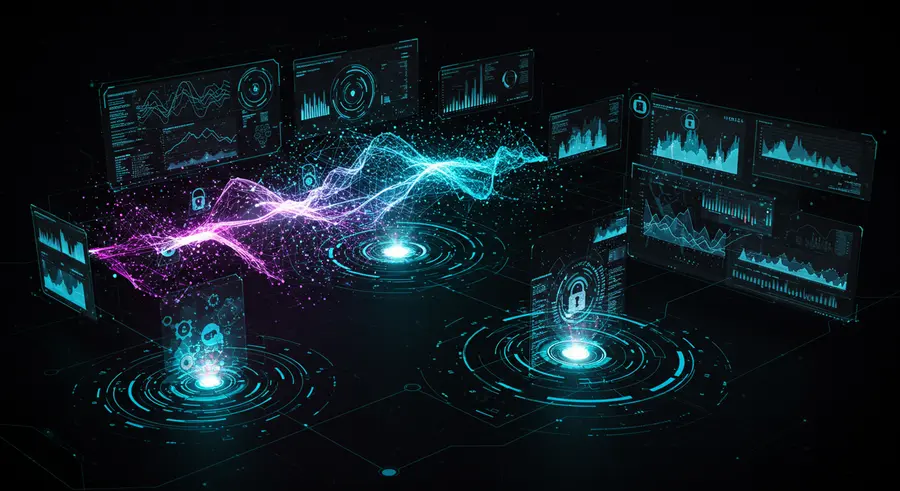Appearance

Welcome, cyber guardians and tech enthusiasts! 🛡️ In today's hyper-connected world, cyber threats are more sophisticated and relentless than ever. Traditional incident response methods, while foundational, often struggle to keep pace with the sheer volume and complexity of modern attacks. But what if we could augment our defenses with intelligent, self-learning systems? Enter AI-Powered Incident Response – a game-changer that's revolutionizing how organizations detect, respond to, and mitigate cyber threats.
Why AI in Incident Response? 🤔
The integration of Artificial Intelligence (AI) and Machine Learning (ML) into incident response strategies is no longer a futuristic concept; it's a present-day imperative. Here's why:
- ⚡ Faster Threat Detection: AI algorithms can analyze vast amounts of data—network traffic, system logs, endpoint activities—in real-time, identifying subtle patterns and anomalies that human analysts might miss. This leads to quicker detection of unusual behaviors and potential threats.
- 🎯 Enhanced Accuracy: Machine learning models are trained on massive datasets of known threats and attack patterns. This allows them to identify new and evolving threats with higher precision, reducing false positives and allowing security teams to focus on genuine incidents.
- 🤖 Automated Triage and Response: AI can automate initial incident triage, classifying alerts, prioritizing them based on severity, and even initiating automated response actions like isolating compromised systems or blocking malicious IPs. This drastically reduces response times and minimizes damage.
- 📈 Predictive Capabilities: Beyond detection, AI can analyze historical incident data to predict future attack vectors and vulnerabilities, enabling organizations to implement proactive defenses.
- 🧠 Continuous Learning: AI systems continuously learn from new data and incidents, improving their detection and response capabilities over time. This adaptive nature is crucial in the ever-evolving threat landscape.
Key Trends Shaping AI-Powered Incident Response in 2025 and Beyond 🚀
The landscape of cybersecurity is dynamic, and several key trends are defining the role of AI in incident response:
- Zero-Day Attack Mitigation: With AI, organizations can better detect and respond to zero-day attacks—previously unknown vulnerabilities—by identifying anomalous behaviors rather than relying solely on signature-based detection.
- Generative AI for Threat Intelligence: Generative AI is being used to synthesize threat intelligence, predict attack paths, and even simulate attack scenarios to test the resilience of security systems.
- AI-Driven SOAR (Security Orchestration, Automation, and Response): SOAR platforms are increasingly integrating AI to automate complex workflows, orchestrate responses across various security tools, and provide richer context for human analysts.
- Behavioral Analytics: AI excels at establishing baselines for normal user and system behavior, making it highly effective at detecting deviations that indicate insider threats or sophisticated external attacks.
- Edge AI for Real-Time Protection: Deploying AI models at the network edge allows for real-time threat detection and response, crucial for IoT devices and distributed environments where latency is a concern.
Best Practices for Implementing AI in Your IR Strategy ✅
To truly harness the power of AI in incident response, consider these best practices:
- Data Governance is King 👑: AI models are only as good as the data they're trained on. Establish robust data governance and privacy policies to ensure the quality, integrity, and security of your data.
- Transparency and Explainability (XAI): Understand how your AI models make decisions. Explainable AI (XAI) is vital for building trust, debugging issues, and ensuring compliance.
- Human-in-the-Loop 🧑💻: AI should augment, not replace, human analysts. Security professionals provide critical context, expertise, and decision-making capabilities that AI currently lacks.
- Continuous Testing and Validation: Regularly test and validate your AI models against new and emerging threats to ensure their effectiveness. Integrate continuous testing into your CI/CD pipelines.
- Integrate with Existing Tools: Ensure your AI solutions seamlessly integrate with your existing security tools, such as SIEM, EDR, and threat intelligence platforms, to create a unified security ecosystem.
- Focus on Automation for Repetitive Tasks: Leverage AI to automate repetitive and low-level tasks, freeing up your security team to focus on more complex investigations and strategic initiatives.
Elevating Your Incident Response Game 📈
The future of cybersecurity incident response is undeniably intertwined with AI. By embracing AI-driven solutions and adhering to best practices, organizations can build more resilient, proactive, and effective defense mechanisms against an increasingly sophisticated threat landscape.
For a deeper understanding of building a foundational incident response strategy, don't forget to check out our comprehensive guide on Building an Effective Incident Response Plan.
Stay secure, stay informed! 🔒